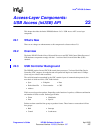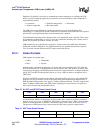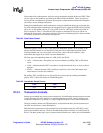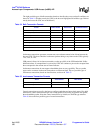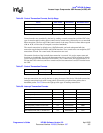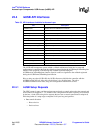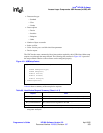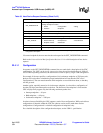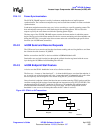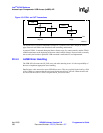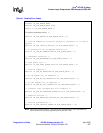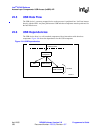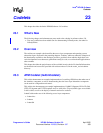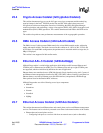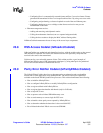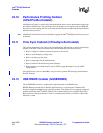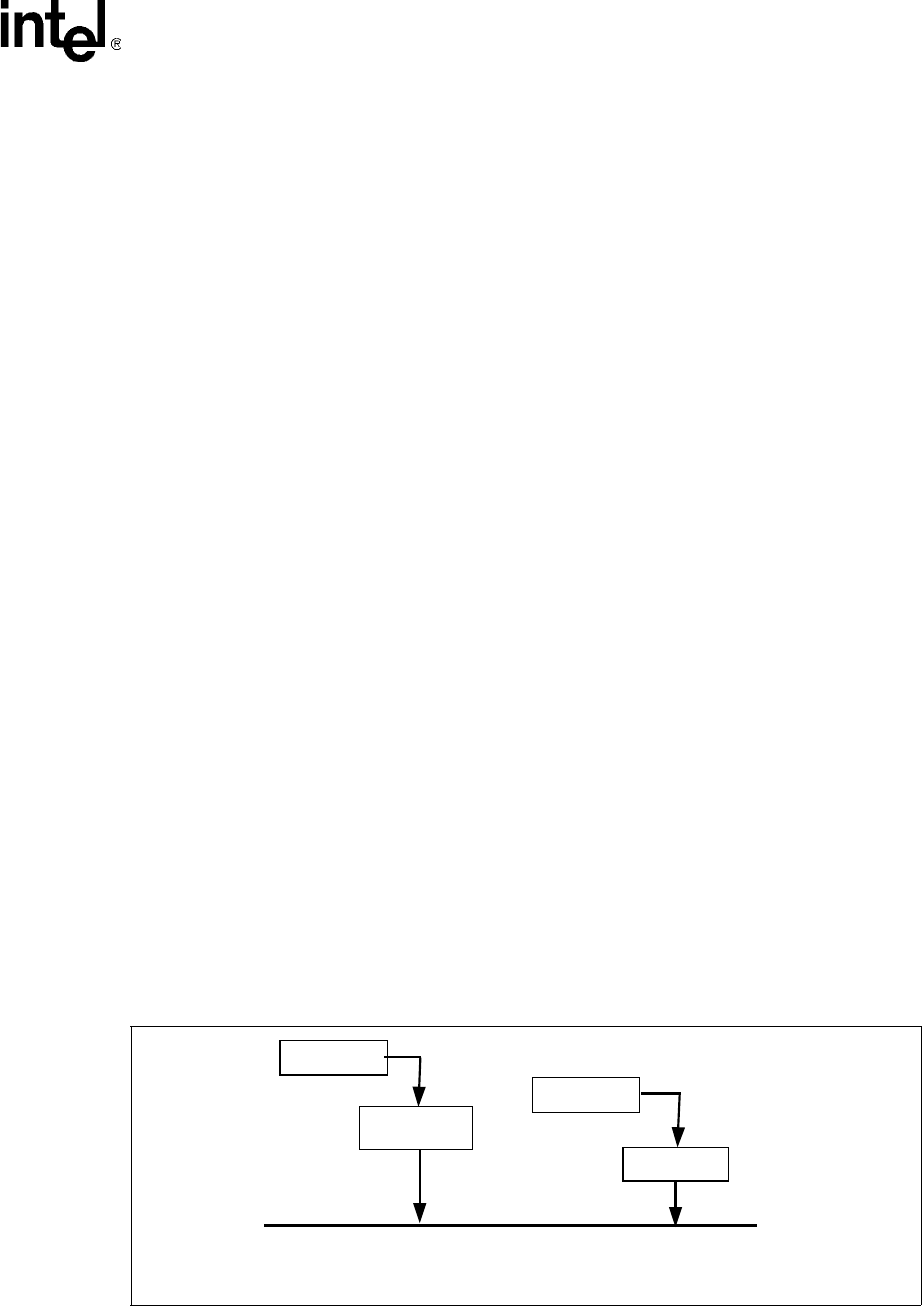
Intel
®
IXP400 Software
Access-Layer Components: USB Access (ixUSB) API
Programmer’s Guide IXP400 Software Version 2.0 April 2005
Document Number: 252539, Revision: 007 305
22.4.1.2 Frame Synchronization
The SYNCH_FRAME request is used by isochronous endpoints that use implicit-pattern
synchronization. The isochronous endpoints may need to track frame numbers in order to maintain
synchronization.
Isochronous-endpoint transactions may vary in size, according to a specific repeating pattern. The
host and endpoint must agree on which frame begins the repeating pattern. The host uses this
request to specify the exact frame on which the repeating pattern begins.
The data stage of the SYNCH_FRAME request contains the frame number in which the pattern
begins. Having received the frame number, the device can start monitoring each frame number sent
during the SOF. This is recorded in the frame counter and made available through specific driver
functions (see ixUSBFrameCounterGet).
22.4.2 ixUSB Send and Receive Requests
The USB access layer encodes and decodes data frames sending and receiving buffers to and from
the client in the same format as IX_MBUF.
Buffers are sent from the UDC to the host with the ixUSBBufferSubmit API.
Data buffers are received from the host through the callback function registered with the access
layer during the ixUSBReceiveCallbackRegister API call.
22.4.3 ixUSB Endpoint Stall Feature
A device uses the STALL handshake in one of two distinct occasions.
The first case — known as “functional stall” — is when the Halt feature, associated the endpoint, is
set. A special case of the functional stall is the “commanded stall.” Commanded stall occurs when
the host explicitly sets the endpoint’s Halt feature using the SET_FEATURE command.
Once a function’s endpoint is halted, the function must continue returning STALL packets until the
condition causing the halt has been cleared through host intervention (using SET_FEATURE). This
can happen both for IN and OUT endpoints. In the case of IN endpoints, the endpoint sends a
STALL handshake immediately after receiving an IN token. For OUT endpoints the STALL
handshake is sent as soon as the data packet after the OUT token is received.
Figure 102. STALL on IN Transactions
Host
IN Token
Device
STALL
Bus
Request Reply
B2418-01



